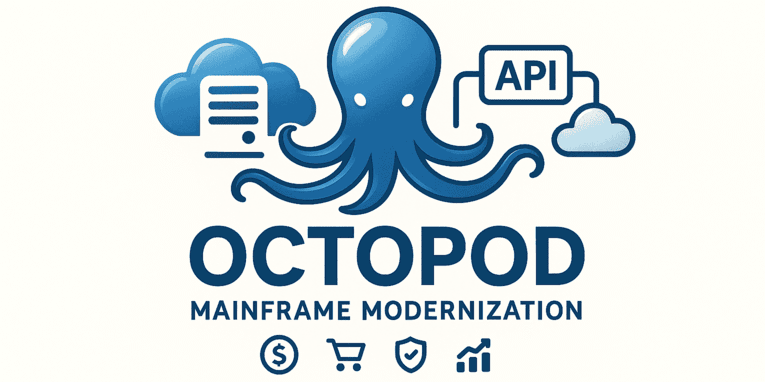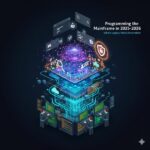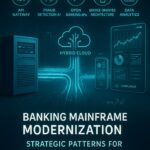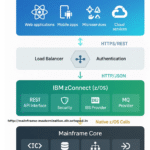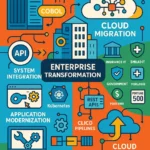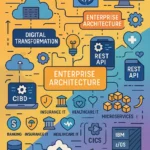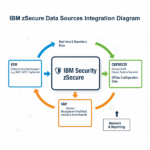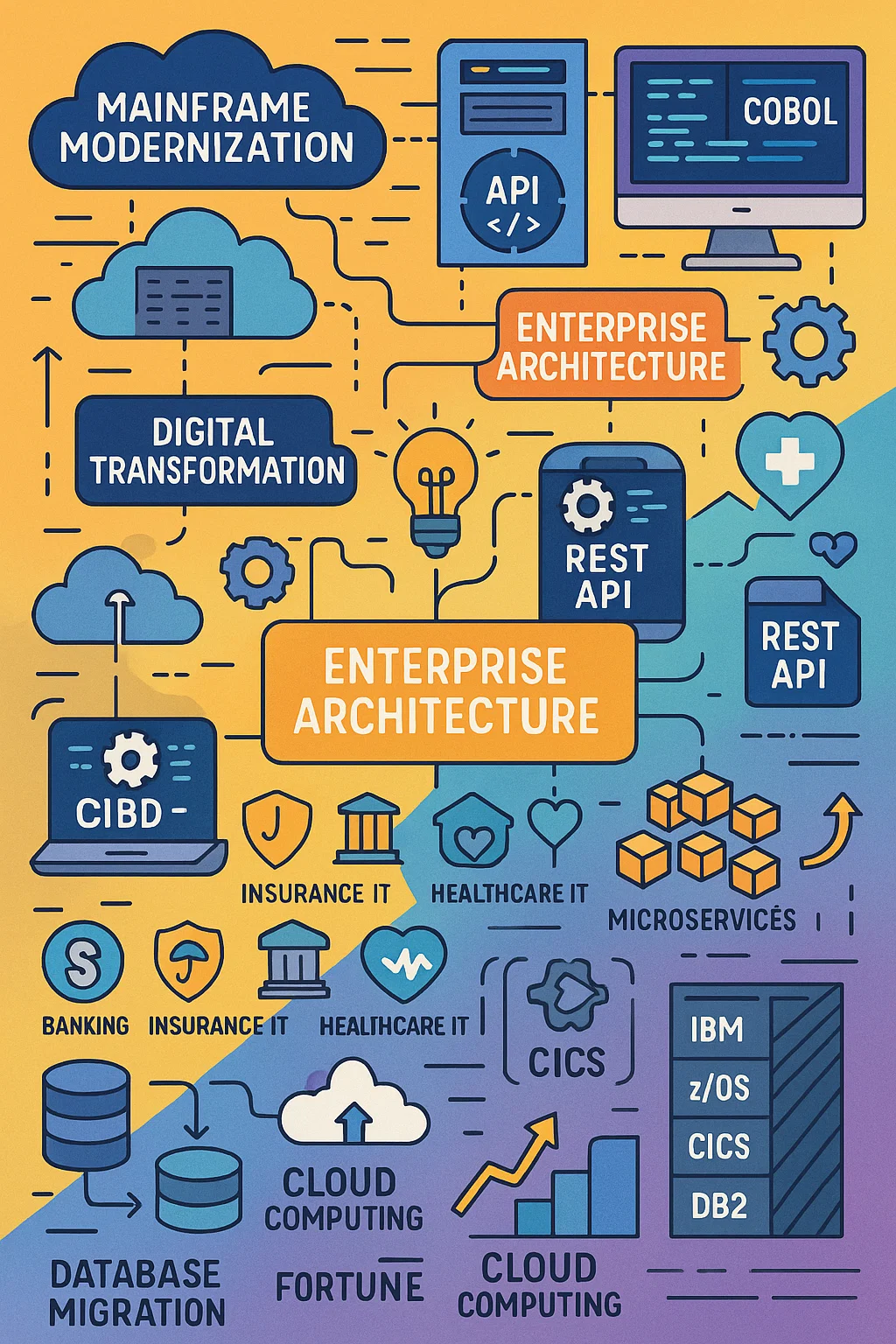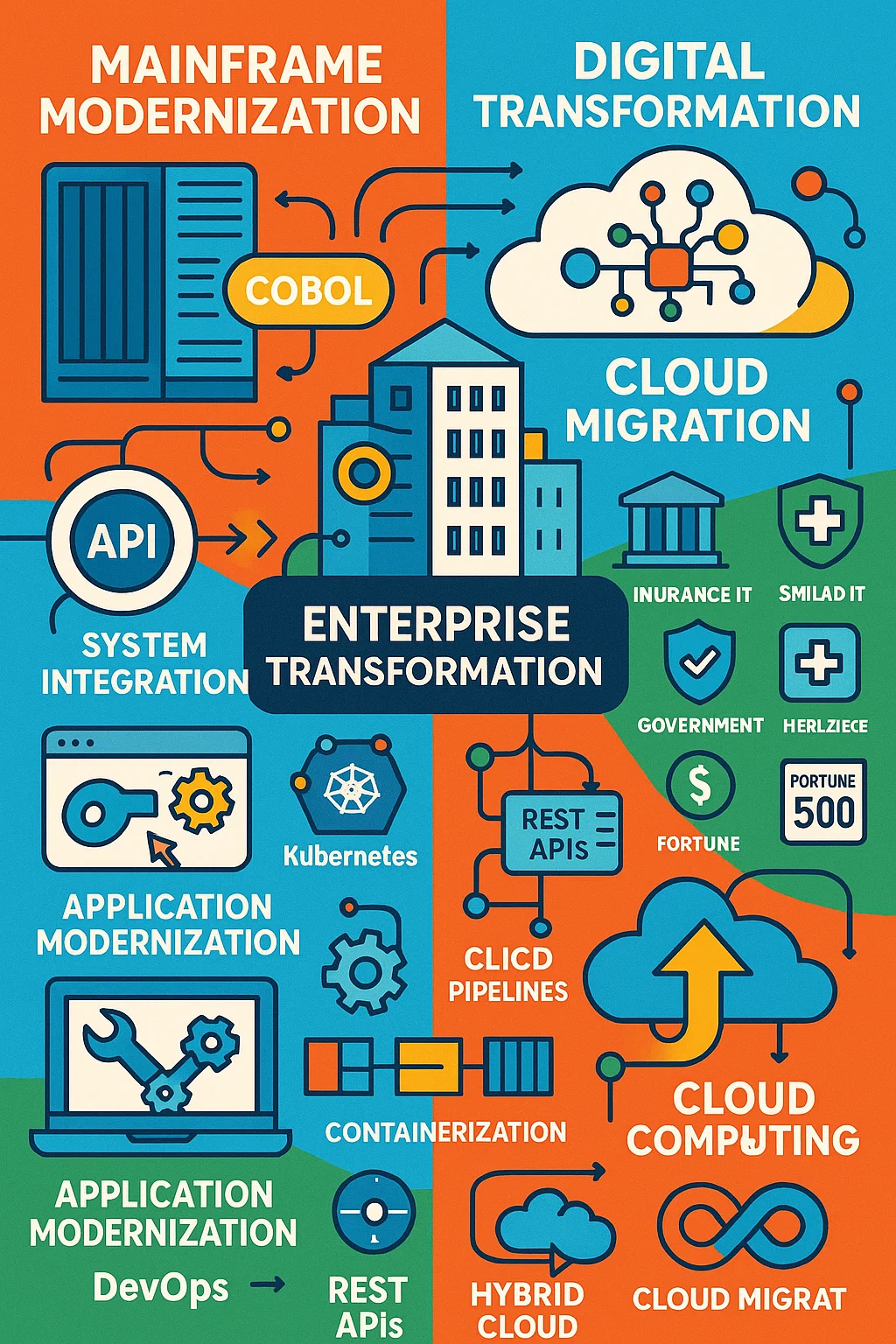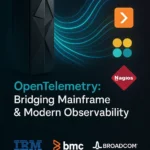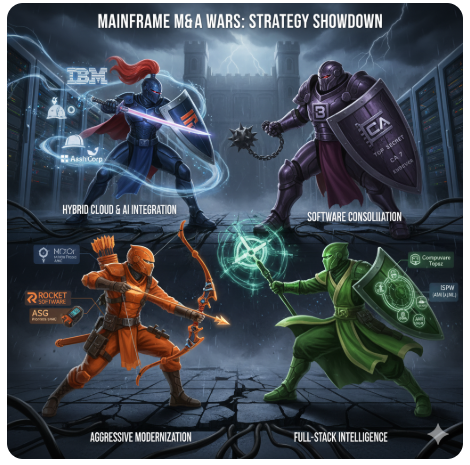The mainframe modernization landscape has undergone a seismic shift in 2025. What once required armies of COBOL experts and years of manual effort can now be accomplished in months with AI-powered automation. This comprehensive guide explores the cutting-edge tools and vendors leading this transformation.
- The AI Transformation is Here
- 🤖 AI-Powered Modernization Leaders
- 🏢 Enterprise Platform Powerhouses
- ☁️ Cloud Migration Game-Changers
- 🔌 API-First Modernization
- 🔄 DevOps Revolution for Mainframes
- 📊 Data Modernization Essentials
- 🆓 Open Source Innovation
- 🎯 Specialized Solutions
- 📈 Making the Right Choice: Tool Comparison
- 💡 Strategic Recommendations by Organization Size
- 🔮 The Future is AI-Powered
- 🎯 Your Next Steps
- The Bottom Line
The AI Transformation is Here
Gone are the days when mainframe modernization meant painstaking manual code translation and risky big-bang migrations. In 2025, artificial intelligence has fundamentally changed how organizations approach legacy system transformation. Major vendors are now offering AI-powered solutions that can:
- Automate 60-80% of code translation from COBOL to modern languages
- Generate comprehensive test suites automatically
- Analyze decades-old codebases to extract business rules
- Predict migration risks before they become problems
Let’s dive into the tools and vendors making this revolution possible.
🤖 AI-Powered Modernization Leaders
IBM watsonx Code Assistant for Z: The COBOL Whisperer
IBM’s watsonx Code Assistant for Z has emerged as the gold standard for AI-assisted mainframe modernization. The latest version (2.5) released in 2025 brings unprecedented capabilities:
What Makes It Special:
- Generative AI that understands COBOL business logic and context
- Incremental modernization approach that reduces risk
- High-quality Java code generation with built-in best practices
- Model tuning that learns from your specific codebase
Real-World Impact: A major insurance company used watsonx to modernize 2.5 million lines of COBOL code, achieving:
- 75% reduction in manual coding effort
- 90% faster translation vs. manual methods
- 40% improvement in code quality
- 6-month acceleration in project timeline
The Investment: Premium subscription pricing, but the ROI is compelling for large-scale transformations.
Best For: Organizations with significant COBOL codebases facing skills shortages and needing enterprise-grade reliability.
AWS Blu Age: Cloud-Native AI Translation
Amazon’s AWS Blu Age represents the cloud-first approach to AI-powered modernization. Acquired and enhanced by AWS, this platform focuses on automated code transformation with cloud deployment in mind.
Key Capabilities:
- Automated COBOL to Java transformation with cloud optimization
- Containerized deployment ready for Kubernetes
- AWS ecosystem integration for seamless cloud migration
- Pay-as-you-transform pricing model
Why It Matters: Blu Age isn’t just translating code – it’s reimagining legacy applications for cloud-native architectures. The AI understands not just syntax but also cloud patterns and best practices.
Best For: Organizations committed to AWS cloud infrastructure and wanting to modernize applications for cloud-native deployment.
Micro Focus AI-Enhanced Development
While not purely AI-focused, Micro Focus has integrated AI capabilities throughout their modernization stack:
AI Features:
- Intelligent code analysis in Enterprise Developer
- Automated test generation for COBOL applications
- Performance optimization suggestions based on AI analysis
- Cloud deployment recommendations for optimal scaling
The Advantage: Combines proven COBOL development tools with modern AI assistance, making it easier for existing teams to adopt.
🏢 Enterprise Platform Powerhouses
IBM’s Comprehensive Modernization Ecosystem
Beyond watsonx, IBM offers a complete modernization ecosystem:
The Stack:
- IBM Application Discovery and Delivery Intelligence (ADDI) – AI-powered portfolio analysis
- IBM Z DevOps – Modern development practices with AI assistance
- IBM API Connect – Intelligent API creation and management
- IBM Transformation Advisor – AI-driven migration planning
Why Choose IBM:
- Deep mainframe expertise spanning decades
- Enterprise-grade security and compliance
- Proven track record with Fortune 500 companies
- Comprehensive support ecosystem
The Reality Check: High costs ($500K+ implementations) and potential vendor lock-in, but unmatched reliability for mission-critical systems.
Micro Focus: The Cloud-Forward Alternative
OpenText’s Micro Focus division offers a compelling alternative with strong cloud integration:
Core Tools:
- Enterprise Server – COBOL application rehosting
- Visual COBOL – Cloud-native COBOL development
- Enterprise Test Server – Distributed testing environments
- Enterprise Developer – Modern IDE with AI assistance
The Sweet Spot: Lower TCO than IBM while maintaining enterprise capabilities, especially strong for organizations planning to leave z/OS entirely.
☁️ Cloud Migration Game-Changers
AWS Mainframe Modernization Service
Amazon’s managed approach takes the complexity out of mainframe migration:
What’s Included:
- AWS Mainframe Modernization – Fully managed service
- AWS Blu Age – AI-powered code transformation
- AWS Application Migration Service – Infrastructure migration
- AWS Database Migration Service – Data transformation
The Appeal: Pay-as-you-use pricing and managed service model means less operational overhead.
Best Fit: Organizations already invested in AWS wanting to leverage existing cloud expertise.
Microsoft Azure’s Integration Strategy
Microsoft focuses on hybrid scenarios and .NET ecosystem integration:
Key Components:
- Azure Migrate – Assessment and migration planning
- Host Integration Server – Mainframe connectivity
- Azure DevOps – Modern CI/CD for migrated applications
- Visual Studio – Familiar development environment
The Advantage: Excellent for organizations with existing Microsoft investments and hybrid cloud strategies.
🔌 API-First Modernization
Zowe: The Open Source Champion
The Zowe Project continues to lead open-source mainframe modernization:
What It Offers:
- API Mediation Layer – Modern API gateway for z/OS
- Zowe CLI – Command-line interface for DevOps integration
- Zowe Explorer – VS Code extension for mainframe development
- Zowe Desktop – Web-based mainframe interface
The Value Proposition: No licensing fees, vendor-neutral approach, and strong community support.
Perfect For: Cost-conscious organizations and teams comfortable with open-source tooling.
Software AG webMethods: Enterprise Integration
For complex enterprise integration scenarios, Software AG remains a strong choice:
Core Capabilities:
- webMethods Integration Server – Enterprise integration platform
- webMethods API Gateway – Comprehensive API management
- webMethods EntireX – Mainframe connectivity specialist
- ARIS – Business process modeling integration
The Differentiator: Handles the most complex integration scenarios with proven scalability.
🔄 DevOps Revolution for Mainframes
GitLab: Modern DevOps Meets Mainframe
GitLab’s mainframe integration brings modern development practices to legacy systems:
Integration Ecosystem:
- Rocket Git for z/OS – Git integration for mainframe source
- DBmaestro TeamWork – Database DevOps for DB2
- Compuware ISPW – Source code management integration
- GitLab CI/CD – Automated pipelines for mainframe deployment
The Transformation: Apply cloud-native DevOps practices to mainframe development while maintaining enterprise reliability.
Jenkins: The Open Source Automation Hub
Jenkins remains popular for organizations wanting maximum flexibility:
Key Plugins:
- zOS Connector Plugin – Job submission and monitoring
- IBM z/OS Batch Builder – Batch job automation
- Compuware Plugins – ISPW and Topaz integration
- CA Harvest/Endevor Plugin – Change management
The Appeal: Highly customizable, extensive community, and cost-effective for smaller teams.
Broadcom: Enterprise DevOps Specialist
Broadcom’s DevOps solutions cater to large enterprises with comprehensive needs:
Complete Suite:
- CA Endevor – Source code and change management
- CA SYSVIEW – Performance monitoring
- CA AutoSys – Workload automation
- CA Chorus – Application lifecycle management
Enterprise Focus: Built for large-scale, compliance-heavy environments with comprehensive audit requirements.
📊 Data Modernization Essentials
Informatica: The Data Integration Leader
Informatica’s platform handles the most complex data transformation scenarios:
Comprehensive Tools:
- PowerCenter – Enterprise ETL/ELT platform
- Cloud Data Integration – Cloud-native data processing
- Data Quality – Advanced data profiling and cleansing
- Master Data Management – Enterprise data governance
The Strength: Proven scalability for massive data volumes with enterprise-grade governance.
Talend: Open Source Meets Enterprise
Talend offers a compelling open-source foundation with enterprise features:
Flexible Platform:
- Talend Open Studio – Free community edition
- Talend Data Integration – Enterprise platform
- Talend Cloud – Cloud-native data integration
- Talend Data Quality – Data profiling and cleansing
The Balance: Lower costs through open-source foundation while providing enterprise capabilities when needed.
🆓 Open Source Innovation
GnuCOBOL & COBOL-IT: Free COBOL Alternatives
Open-source COBOL platforms offer compelling alternatives:
What’s Available:
- GnuCOBOL – Free, cross-platform COBOL compiler
- COBOL-IT Developer Studio – Professional COBOL IDE
- COBOL-IT Runtime – Production execution environment
- Cloud deployment tools – Container and Kubernetes support
The Appeal: No licensing fees, cross-platform execution, and modern development environment.
Reality Check: Best for smaller applications or organizations comfortable with community support models.
🎯 Specialized Solutions
Rocket Software: The Mainframe Specialist
Rocket Software focuses exclusively on mainframe optimization:
Specialized Tools:
- Rocket ChangeMan ZDD – Zero downtime deployment
- Rocket BlueZone – Terminal modernization
- Rocket Data – Database optimization tools
- Rocket API – Mainframe API creation
The Focus: Incremental modernization for organizations wanting to optimize existing mainframe investments.
LzLabs: Container-Based Rehosting
LzLabs Software Defined Mainframe offers a unique rehosting approach:
Revolutionary Approach:
- Container-based mainframe emulation – Run applications unchanged
- Binary compatibility – No code modifications required
- Cloud-native deployment – Modern operations and monitoring
- Significant cost reduction – Eliminate mainframe hardware costs
The Innovation: Run mainframe applications in containers without changing a single line of code.
📈 Making the Right Choice: Tool Comparison
📈 Making the Right Choice: Tool Comparison
| Category | Best Tool | Key Strength | Investment Level | Timeline | Ideal For |
|---|---|---|---|---|---|
| AI-Powered Translation | IBM watsonx Code Assistant | 60-80% automation | Very High | 6-18 months | Large COBOL codebases |
| Cloud-AI Translation | AWS Blu Age | Cloud-native optimization | Moderate | 8-24 months | AWS-focused organizations |
| Enterprise Platform | IBM ModernSystems | Comprehensive ecosystem | Very High | 12-36 months | IBM mainframe shops |
| Cloud Migration | AWS Mainframe Modernization | Managed service model | Moderate | 8-24 months | Cloud-first strategies |
| Open Source API | Zowe | No licensing fees | Low | 3-12 months | Cost-conscious projects |
| Enterprise DevOps | GitLab + Partners | Modern development practices | Moderate | 6-18 months | DevOps transformation |
| Data Integration | Informatica | Enterprise-grade governance | High | 6-18 months | Complex data scenarios |
| Cost-Effective COBOL | GnuCOBOL/COBOL-IT | Open source foundation | Low | 3-8 months | Small-medium applications |
💡 Strategic Recommendations by Organization Size
Fortune 500 Enterprises
The AI-First Approach:
- Invest in IBM watsonx for critical COBOL modernization
- Implement comprehensive DevOps with GitLab or Broadcom
- Use Zowe for API enablement to avoid vendor lock-in
- Plan multi-year transformation with phased AI adoption
Expected Investment: $2M-10M+ over 24-36 months Expected ROI: 40-60% reduction in development costs, 6-month faster time-to-market
Mid-Market Organizations ($100M-$1B Revenue)
The Balanced Strategy:
- Start with AWS/Azure migration services for cost efficiency
- Use Zowe + cloud tools for API modernization
- Implement GitLab CI/CD for DevOps transformation
- Consider Micro Focus for COBOL development needs
Expected Investment: $500K-2M over 12-24 months Expected ROI: 30-50% reduction in infrastructure costs, improved developer productivity
Smaller Organizations & Startups
The Open Source Path:
- Begin with Zowe ecosystem for core modernization
- Use Jenkins + plugins for automation
- Implement GnuCOBOL for COBOL applications
- Leverage cloud services for scalability
Expected Investment: $100K-500K over 6-18 months Expected ROI: Eliminate mainframe hardware costs, gain development agility
🔮 The Future is AI-Powered
What’s Coming Next
The AI revolution in mainframe modernization is just beginning. Here’s what to expect:
2025-2026 Trends:
- AI will become standard in all modernization tools
- Automated testing will reach 90%+ coverage
- Real-time code optimization during development
- Predictive migration planning with risk assessment
- Natural language to code generation for business analysts
The Skills Revolution:
- Traditional COBOL expertise becomes less critical
- AI-assisted development skills become essential
- Cloud-native architecture knowledge increases in value
- Business analysis and requirements skills gain importance
🎯 Your Next Steps
Immediate Actions (Next 30 Days)
- Assess your current codebase – Use portfolio analysis tools
- Evaluate AI-powered options – Test IBM watsonx or AWS Blu Age demos
- Pilot API modernization – Start with Zowe for quick wins
- Plan skills development – Begin AI-assisted development training
Short-term Goals (3-6 Months)
- Implement modern DevOps practices for mainframe development
- Create API-first architecture for new integrations
- Begin incremental modernization of high-value applications
- Establish cloud strategy and migration priorities
Long-term Vision (1-3 Years)
- Complete AI-powered modernization of critical applications
- Achieve hybrid cloud architecture with optimal workload placement
- Establish data-driven operations with predictive analytics
- Build competitive advantage through faster innovation cycles
The Bottom Line
The mainframe modernization landscape has fundamentally changed. Organizations that embrace AI-powered tools and modern development practices will gain significant competitive advantages, while those clinging to manual approaches risk being left behind.
The key is starting now. Whether you choose IBM’s comprehensive AI ecosystem, AWS’s cloud-native approach, or open-source solutions like Zowe, the important thing is beginning your AI-powered modernization journey today.
The future belongs to organizations that can harness the power of AI to transform their legacy systems into modern, agile platforms. The tools are here, the technology is proven, and the time is now.
What’s your organization’s modernization strategy? Are you ready to embrace the AI revolution, or are you still planning manual transformations? The choice you make today will determine your competitive position for the next decade.
